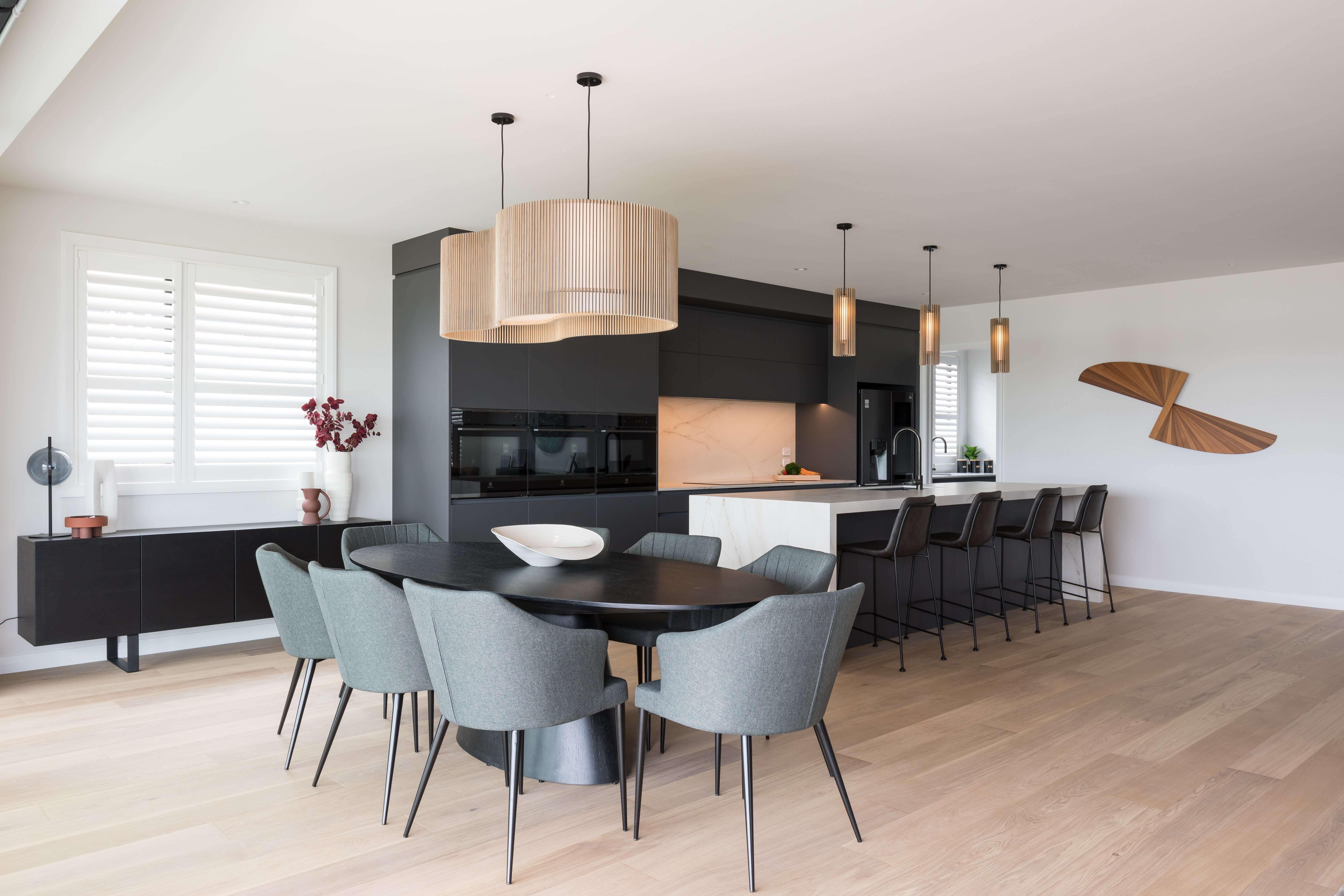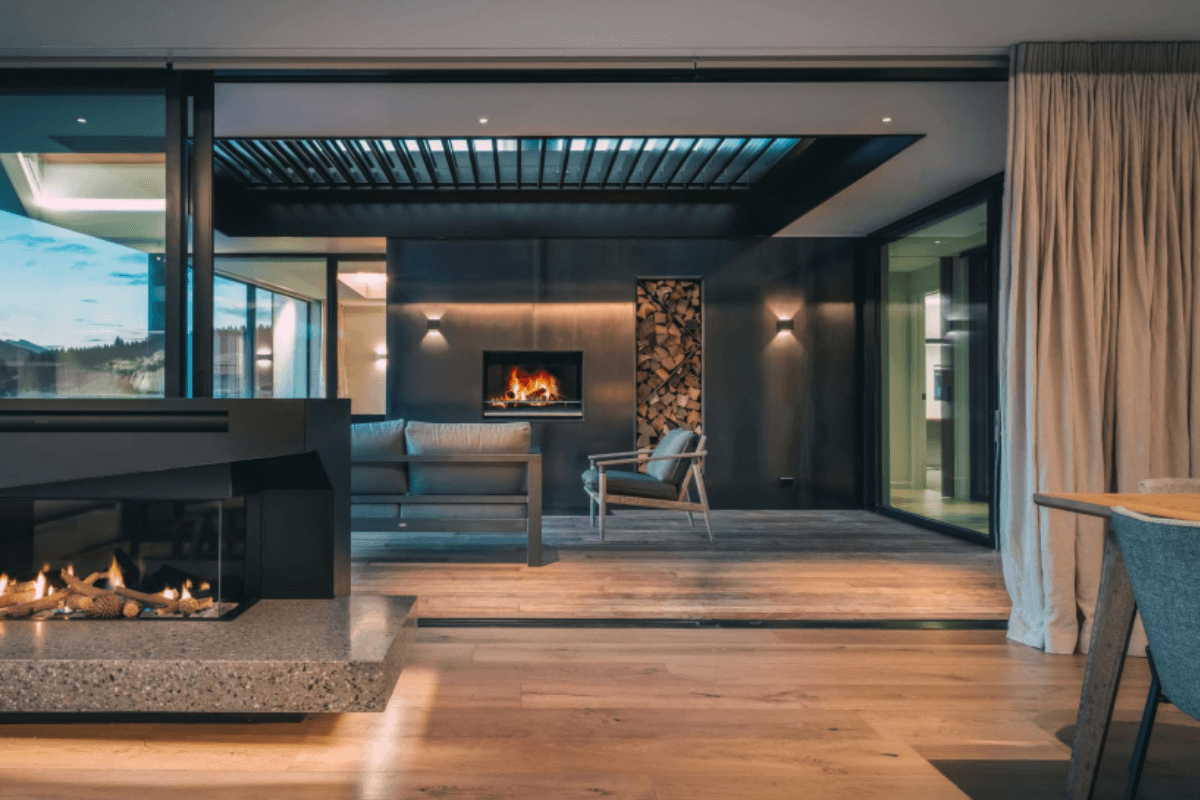Which is Better, Laminate Flooring or Engineered Wood Flooring?
Blog |
If you need an affordable wood flooring product, engineered timber and laminate flooring should be at the top of your list.
However, the choice between laminate and engineered wood flooring depends on your specific needs and preferences. In this article, we outline the key characteristics of both types and the most suitable applications for each.
Laminate flooring
Laminate or vinyl is made of multiple synthetic layers laminated together. The base is made of fibreboard with a photographic applique layer applied on top to look like real wood. This top layer is coated with clear resin to protect it from wear and tear.
Characteristics of laminate flooring
- Affordable
- Lightweight
- Can be cleaned with most cleaning products
- A lifespan of 10 to 20 years
Best applications for laminate flooring
If your priority is to keep project costs down, laminate flooring is likely the way to go. If you aren’t determined to have authentic wood flooring, laminate is a simple and hard-wearing solution.
If you don’t want to think too hard about cleaning and maintenance, you may also be less limited if you choose vinyl. Unlike real wood products, vinyl can be cleaned with little thought to the products you use.
For these reasons, you may consider laminate flooring in the following environments:
- Kitchens and dining rooms
- Water closets
- Some bathrooms
- A laundry or mudroom
- An entrance or foyer
- Corridors
However, vinyl does not last as long as real wood flooring and typically has a repetitive pattern. While it is practical and simple in the short term, the cost of replacement and the fake appearance may lead you to choose engineered hardwood planks instead.
Engineered timber flooring
Engineered wood is made of a hardwood veneer attached to a multi-layered backing, usually made of more cost-effective timber, such as plywood. This is glued cross-directionally and pressed for ultimate strength.
Engineered wood flooring planks are typically glued down for improved sound and feel underfoot. Additionally, tongue and groove joints provide a robust and seamless finish.
Characteristics of engineered hardwood flooring
- Authentic appearance
- Can be refinished multiple times
- Cost-effective
- Durable
- Must be cleaned with suitable cleaning products
- A lifespan of 25 to 50 years
Best applications for engineered wood flooring
If you want durable, cost-effective, and authentic flooring, engineered wood planks are your most effective option. You can refinish the planks several times during their lifespan, meaning they can last up to 50 years. This is more cost-effective and visually appealing than the one-off photographic finish of vinyl.
Living rooms
Engineered wood flooring is a fantastic choice for a living room because it offers a warm and inviting aesthetic, durability, easy maintenance, and versatility. Unlike carpet, wood flooring does not trap dust or other allergens, making it a great choice for families and pets. See how the Artiste Rustic Da Vinci plank was paired with a rug in the Two Barns project.
Kitchens
With the hustle and bustle of a kitchen, flooring must be easy to clean and able to withstand a lot of foot traffic. Engineered wood floors are ideal, provided you clean up any spills quickly. See the Ultra Marbled Oak in our Welcome Bay project for inspiration.
Dining rooms
Engineered wood floors create a timeless and inviting atmosphere for dining and gatherings. They are durable, can withstand spills and frequent use, and are easy to maintain. They also provide excellent acoustics for enjoyable dining experiences. See how the Ultra Marron French Oak plank was used in the Origine bistro project.
Entryways and corridors
Engineered wood flooring in an entry or corridor is a surefire way to impress. It is practical for in-between spaces where you remove shoes or store wet umbrellas, and it creates a seamless flow from one space to another. For example, see how the Van Gogh plank was used in our Ardmore House project.
Water closets
Engineered wood flooring is often used in water closets because they are less prone to moisture build-up than in bathrooms. For a streamlined look, you can install the same wood flooring in your water closet as in your corridors and nearby living spaces.
Laundry rooms and mudrooms
As an in-between place, a laundry or mudroom needs to withstand the mess that comes with that. Engineered wood flooring makes it easy to clean and can stand the rough and tumble setting.
Wood floors in wet areas
In 2021, the Building Code E3 Internal Moisture requirements were updated. Following this, there has been some misunderstanding about what type of flooring is permitted in wet areas.
The Building Code states that all surfaces in wet areas must be impervious, easily cleaned, and have adequate ventilation. This helps to avoid fungal growth and excessive moisture in habitable spaces, bathrooms, laundry rooms, and other spaces where moisture accumulates.
Provided it is installed according to E3 standards, several flooring options can be used in wet areas, including:
- Vinyl or laminate
- Stone Plastic Composite vinyl (SPC)
- Cork
- Timber
Laminate flooring for wet areas
To install laminate floorboards in wet areas, they must be tightly sealed to prevent moisture from seeping into the fibreboard. This could cause it to swell and warp, which is impossible to repair.
Engineered wood flooring for wet areas
Engineered hardwood backing is dimensionally stable, which means it is more resistant to swelling and expansion. At Forté, we’ve established a compliance pathway to streamline the council consent process. This has already been used to specify our wood flooring in multiple projects which have been passed through councils across New Zealand.
- Single-dwelling kitchens
- Multi-dwelling kitchens
- Laundries
- Some water closets (excludes bathrooms)
Forté wood flooring
Engineered wood is a wise investment because it adds warmth and character that you can enjoy for several decades. Here at Forté, our wide range of engineered hardwood flooring is suitable for a variety of environments and applications. Every board undergoes a strict quality control process to ensure it is engineered for maximum durability and longevity.
Key benefits of our flooring:
- Pre-finished for efficient installation
- Sustainably sourced timber
- Safe, healthy, and low in formaldehyde
- Can be re-sanded up to three times
- Wide range of colours, wood grains, and formats
- Designed for the New Zealand climate
Contact us for more information about our flooring collections or to get our advice about your interior project. We’ll share our expertise and product recommendations to inspire you and we’ll even send you a free box of flooring samples to help you decide.
Visit one of our Showrooms
If you have any queries about our products or need help with your project, we can provide you with expert advice. Visit one of our showrooms or book a consultation with our flooring experts today.




